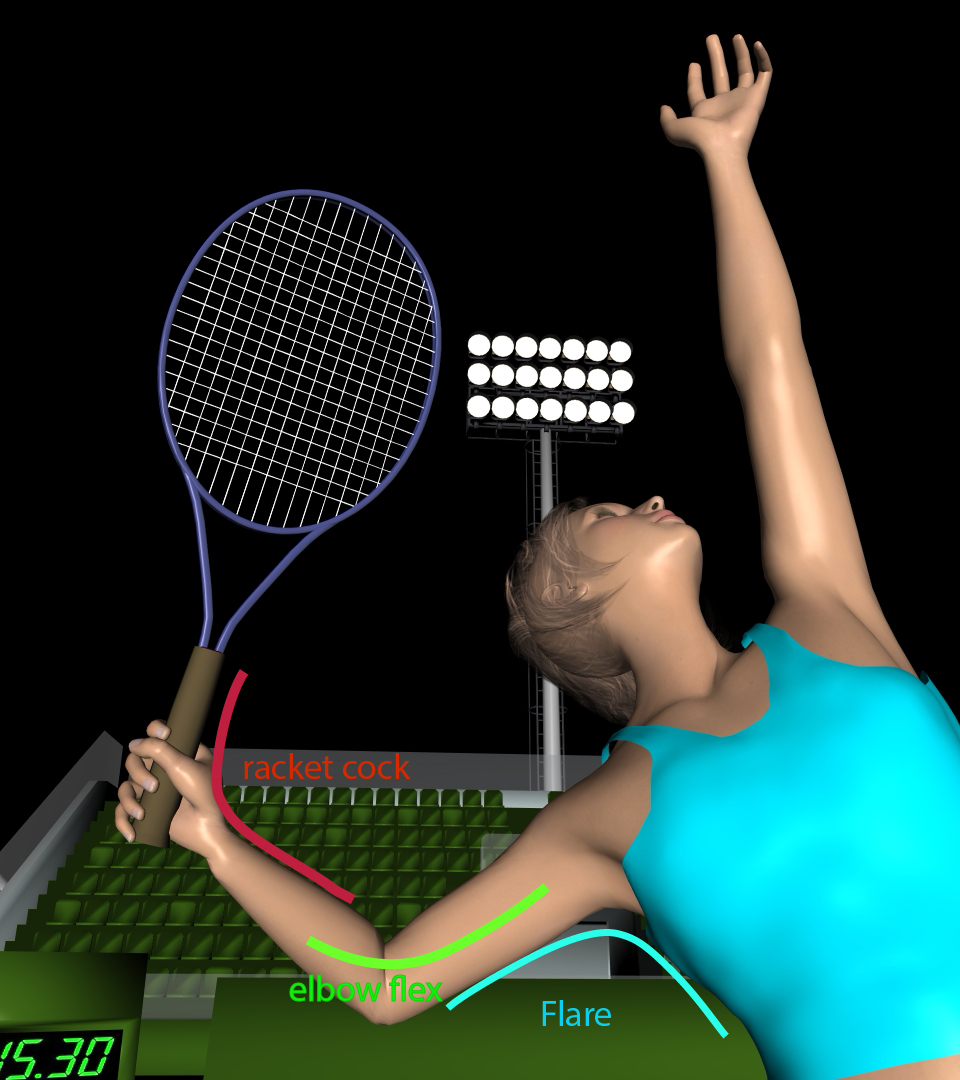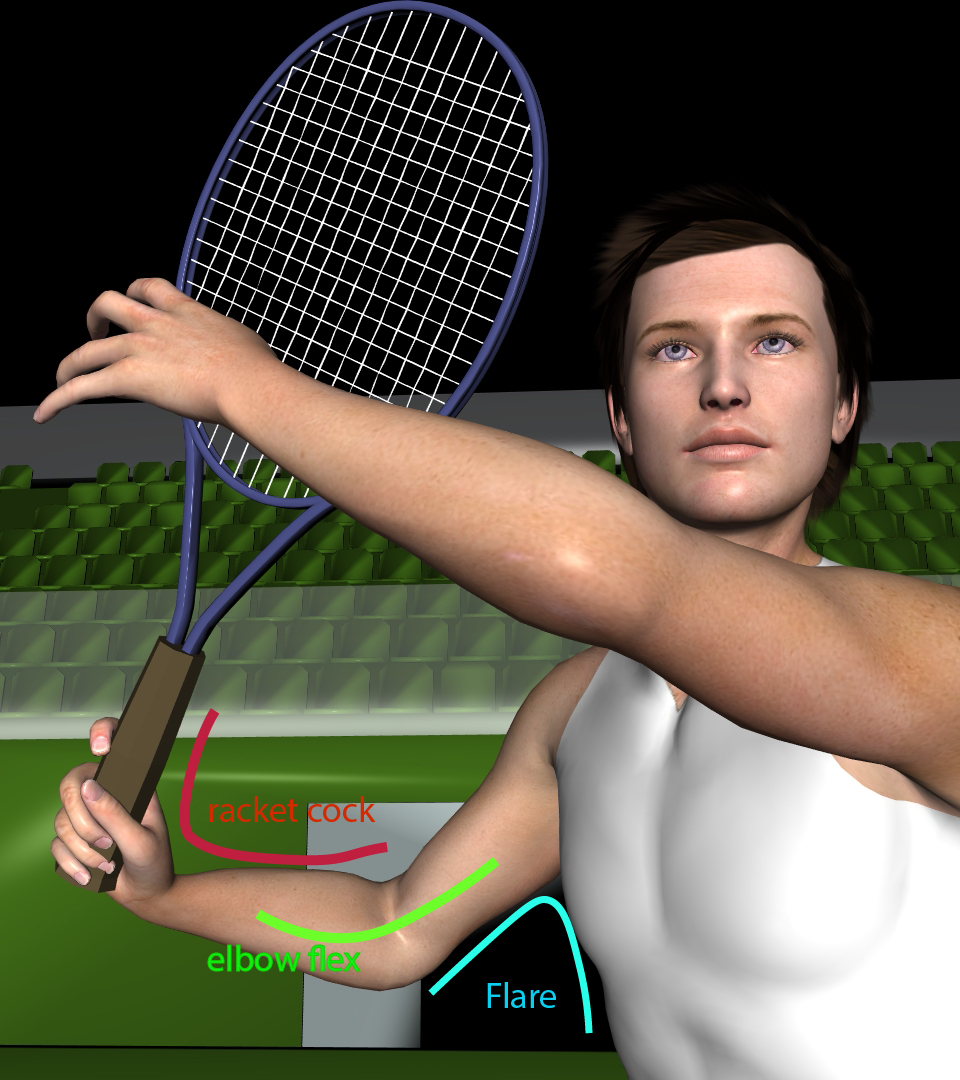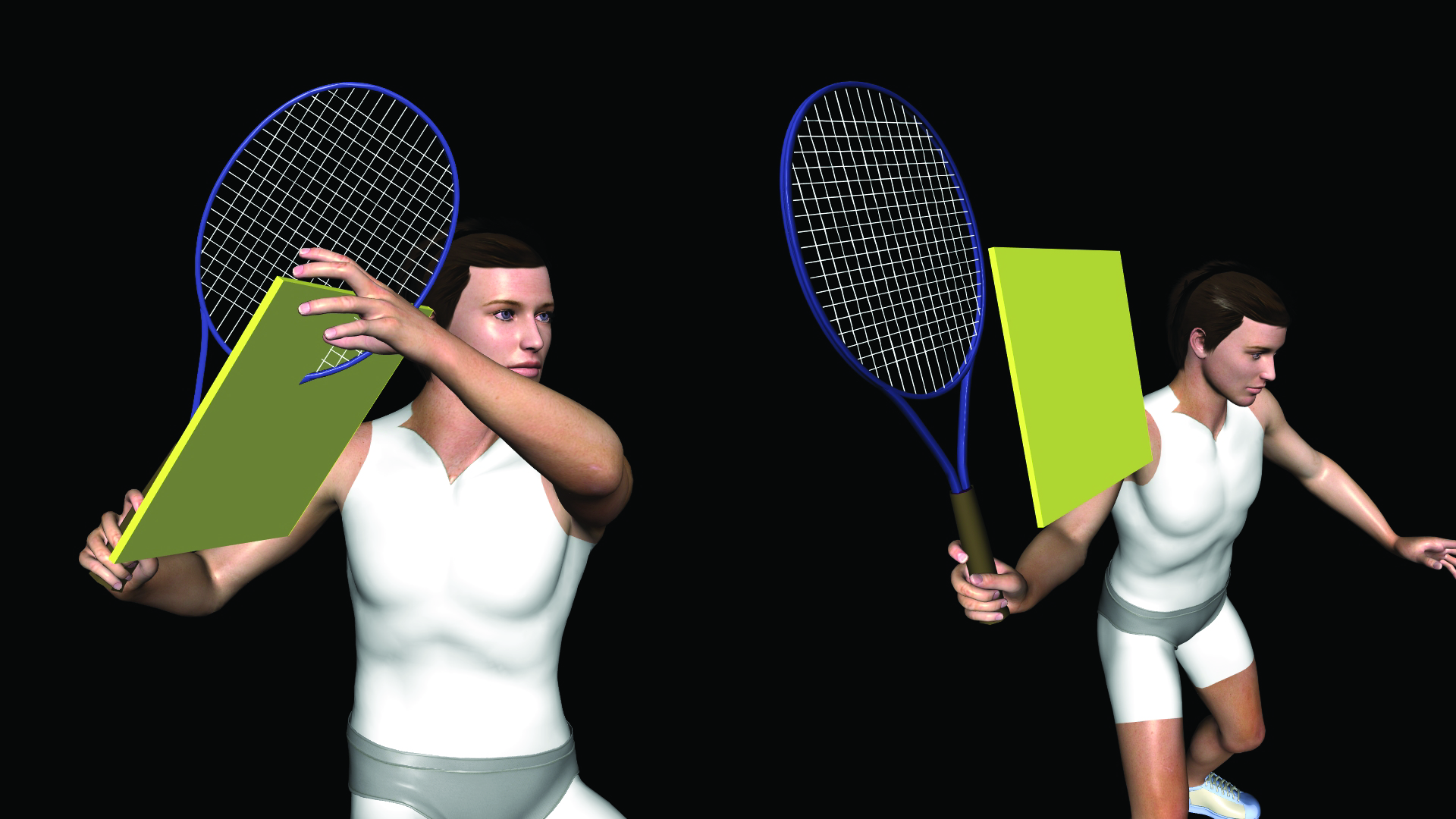The Pose
The pose is an essential, often neglected component of every stroke; from the volley to the serve. A consistent and appropriate pose is essential for the production of both spin and control in every stroke. The pose is a transient position of the shoulders, arm, wrist, and racket that occurs between the unit turn and the lock phase. Occasionally there is a brief pause in the stroke during the pause, but more often the pose is like an instantaneous mental snapshot taken during the transition between the unit turn and the backswing proper; it is a goal but not a destination.

The overarching purpose of the pose is to put both arms and the racket into a state that prepares them for the lock. The lock itself is designed to put the hitting forearm and racket into a position that prepares them for the load. Thus the pose is designed to prepare the hitting arm to be prepared. That is a bit bizarre and contra-intuitive, and flies in the face of the A-players' prime directive; "Just do it!" Perhaps that is why the pose has been neglected over the years by coaches and players alike Yet most playing pros appear to pose obsessively on all of their strokes (see Poses in the Strokelab.) In general, the position of the arms and racket in the pose is halfway between the position they take in the ready position and the position they will take at the end of the lock. The pose ensures that the arm-racket unit is 'on its way' to the orientation it needs to be in when the forward power wave peak hits to begin the load phase. Ultimately getting the arm into the right orientation for the load is critical for control and spin.
Universal Pose Components
The Cock
If, for example, the wrist is ulnar flexed, a.k.a. 'not cocked' at the end of the lock of virtually any stroke, the racket will be in line with the forearm. When the power wave hits, dragging the wrist forward towards the ball, the inertia of the racket head will force it to lag behind the wrist, but if the wrist is in-line with the forearm there will be no rotation force or torque on the forearm. Without that torque, you cannot store rotational forces in the forearm pronator muscles, so you lose all spin and control. The need for torque is why all of the poses, including the serve pose, feature radial-flexion of the wrist about 10 percent beyond neutral flex i.e., 60% of the full range of motion . For convenience, I call the radial flexion that appears in all poses the 'cock.'
The Flare
Another universal component of the pose on all strokes is to get the hitting arm elbow away from the body. I call this component of the pose the "flare" because that is how it looks and feels. The flare does two essential things: First, it lifts the arm, storing gravitational energy that will be used to get the arm moving into the lock going without using the muscle force. Using gravity to start the motion of the hitting arm in the lock is essential for muscle relaxation. Second, flaring prevents chicken-winging, a very bad syndrome that robs the stroke of power, spin and control. The forearm-racket complex wants to be some distance from the body at the start of the load to permit you to adjust and optimize leverage. The farther the racket head is from the center of rotation of the shoulders, the greater the force required from the shoulders to accelerate the racket. If the arm is too extended, it takes too much oomph to get the racket going. If the arm is not extended enough, it is easy to get the racket moving but takes more rotation of the shoulders to move the racket a given distance. The key is to set the optimal distance of the racket from the body to take the best advantage of the power coming through the shoulders without overloading the shoulders, arm or wrist. Ideally, that distance changes throughout the stroke, lengthening as the racket gains momentum. By starting the elbow some distance from the body, you allow yourself to fine-tune the distance from the racket to your core and control leverage.


